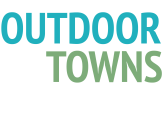The Action Team is the core of the Outdoor Town. There are two parts to establishing an Action Team. The first step is to gather a small group of people who are passionate about making your community more attractive and accommodating for outdoor recreation. This initial core group can be as small as two to five people. The second step is to expand the Action Team as necessary as work progresses. Don’t be daunted by organizing an Action Team – a small core group of passionate people can accomplish a lot and have fun doing it.
Team members must be willing to attend regular meetings and work actively toward your goals. After the core group expands, the Action Team should consist of diverse members with a broad range of skills. You should establish a Team Leader and recruit people that can fill these roles:
- Strategist – refines goals and provides input into the design of plans and activities
- Connector – connects you to residents, businesses, local organizations and stakeholders
- Helping Hand – helps with executing activities and projects
- Communicator – creates a communication plan, carries out education and outreach
- Designer – prepares visually appealing promotion materials
- Facilitator – helps with meeting facilitation and trains others
- Event Planner – coordinates logistics, volunteers for project events
- Implementer – takes responsibility for monitoring implementation of objectives
- Evaluator – provides input into evaluating success
Many of the improvements you will make will be in public spaces, so it is important to have the support of local government. Try to get at least one elected official or municipal staff person on the team. Engaging civic organizations and the business community in the Action Team is a great way to jump start projects and programming.
Hold the First OFFICIAL Action Team Meeting
- Review the Benefits of Being an Outdoor Town
- Review the Essential Ingredients of a Great Outdoor Town
- Have an open discussion about the purpose of your Team and expectations of Team members
- Complete the Asset Identification Form to identify recreational, heritage and cultural assets. If possible, get a large map printed out of your town to help with this exercise.
- Complete the Community Readiness Checklist to evaluate if your town is ready to move ahead
- Distribute the Community Leader List and ask who needs to be added to it.
- Develop a few key talking points about your initiative that Team members can use to create awareness with their contacts
- Ask for volunteers and assign roles for your work, including such tasks as:
- Recruiting more team members
- Developing a communications plan to get the message out about your work
- Planning well-designed meetings that keep people interested and participating in your work.
- Identifying Resources and Reviewing Prior Plans – see Step 2 below.
- Set your next meeting date, giving Team members time to complete their tasks. Teams should meet regularly, at least once a month to keep momentum going.
- After every meeting, send out meeting notes as soon as possible, that list action items with deadlines to keep everyone on task and on time.

